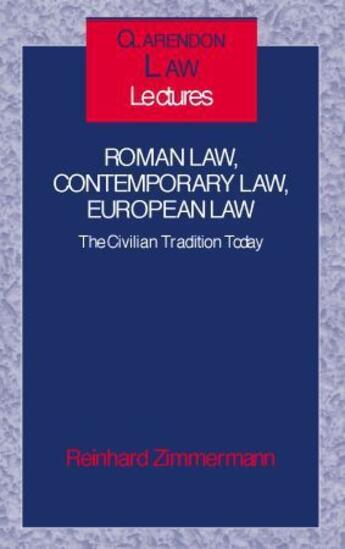-
Date de parution : 16/09/2010
-
Editeur :
Oxford Up Elt
-
EAN : 9780198299134
-
Série :
(-)
-
Support :
Papier
Résumé:
Combines close legal analysis, legal historiography, and reflections on contemporary (and future) legal developments throughout Europe Legal history helps us to understand our modern law. It explains why the law has become what it is. It lays open the premises on which the modern law is based.... Voir plus
Combines close legal analysis, legal historiography, and reflections on contemporary (and future) legal developments throughout Europe Legal history helps us to understand our modern law. It explains why the law has become what it is. It lays open the premises on which the modern law is based. It constitutes a rich source of experience which is as valuable for the development of modern legal doctrines as for law reform. It may also reveal where a wong turn has been taken and thus prevent us from repeating an error. Today, however, historical legal scholarship has acquired an added significance in view of the Europeanization of private law and private law scholarship. It enables us to see the common ground between our modern national legal sustems and to understand existing differences. It makes us aware of the fact that the law has not developed in national isolation and can, therefore, not properly be understood under purely national auspices. It constitutes the foundation for scholarship in comparative law and paves the way towards re-establishing a European legal culture.
The focus of these Clarendon lectures is on the "vital connection that ties the present to the past" (Savigny) and on the link between legal history, modern legal doctrine, and comparative law. They aim to recreate an awareness of a fundamental intellectual unity based on a common tradition. Such awareness is of central importance to sustain the process of a Europeanization of private law which we experience today.
Lecture One: The End of an Era: Transformation of Scholarship in Roman Law Lecture Two: The Transition from Civil Law to Civil Code: Dawn of a New Era?
Lecture Three: A Change in Perspective: European Private Law and its Historical Foundations
Donner votre avis








